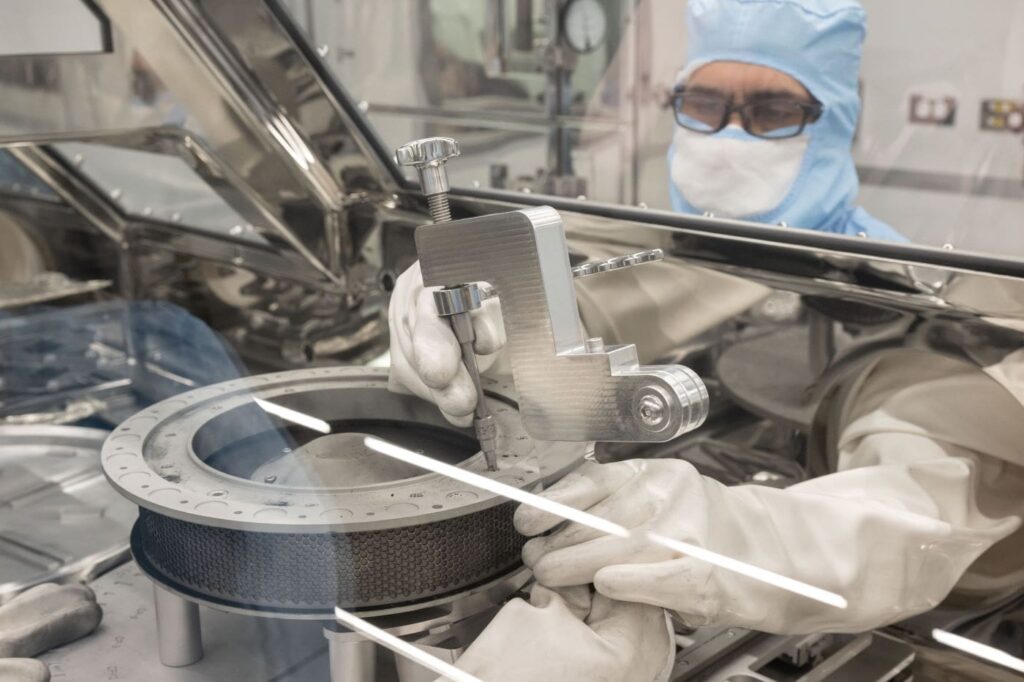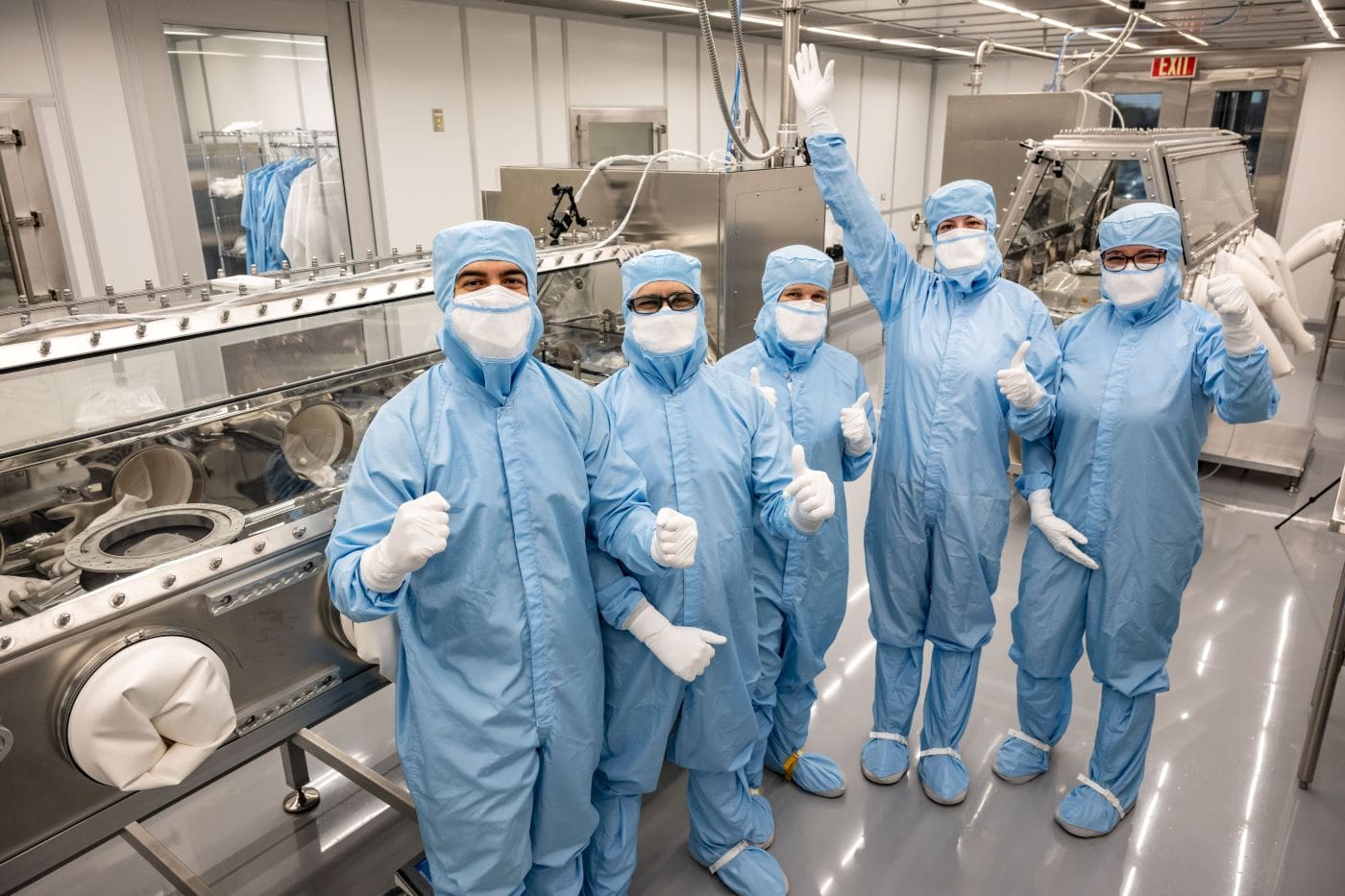Introduction
In the expansive narrative of space exploration, the OSIRIS-REx mission by NASA emerges as a monumental triumph, narrating a saga of cosmic conquest and human brilliance. The odyssey embarked upon in September commenced with the spacecraft’s graceful touchdown in Utah, carrying precious cargo—an invaluable collection of rocks and dust procured from the mysterious asteroid Bennu. However, this cosmic bounty remained obscured in frustration, entangled by the unyielding grasp of two persistent fasteners. The ensuing tale unfolds the sagas of perseverance, inventive prowess, and eventual success as NASA’s skilled technicians grappled with these celestial impediments, transforming challenges into triumphs on the cosmic stage.
The Initial Setback
Imagine a situation where a box of special rocks from space is just beyond your grasp. OSIRIS-REx, NASA’s spacecraft, found itself in this tricky spot as two stubborn fasteners acted like tough guards, keeping the precious space treasure locked away. Even though the spacecraft made a successful comeback, getting to all the collected rocks turned out to be a big problem. It was like trying to solve a space mystery that hung around for months, making things quite puzzling.
NASA’s Jan. 10 Triumph
On January 10th, something big happened in space. NASA’s smart team of technicians did something really important. After working hard for many months, they finally opened a box in space. This box had special things from an asteroid. It was a tough job, like a cosmic wrestling match with stubborn locks, but they did it.
This moment was a game-changer for NASA’s OSIRIS-REx mission. This mission is special because it’s the first time the U.S. tried to bring back pieces from an asteroid. Imagine it like a cosmic history book, and this event got its chapter.
Think of the NASA experts like space heroes, using their skills to outsmart tricky locks. Opening the box was like breaking free from cosmic chains. Now, scientists can look at the cool stuff inside and learn more about space.
This breakthrough is a big deal not just for the mission but for space exploration. OSIRIS-REx, already a star for being the first to collect pieces from an asteroid, now has another shining moment. The story of this mission is like an exciting adventure, where each twist and turn makes a cool story about people exploring space.
When the locks finally gave in to NASA’s smart team, it felt like a big win. It’s not just about being good with machines; it shows how strong people are when they aim for things beyond what they know. Breaking these cosmic barriers means more chances to explore and learn about the universe.
So, January 10th isn’t just a date on the calendar for this mission; it’s a special day in the story of exploring space. This achievement tells us that we should never stop trying to understand the mysteries of the universe. As OSIRIS-REx keeps going, this win against the tricky locks will always be a guide for future space adventures, showing that we can conquer challenges and discover more wonders in the vast space around us.

Image credit: NASA via Twitter
Initial Success and Subsequent Hurdles
Before the triumph over the fasteners, NASA’s dedicated team stationed at the Johnson Space Center in Houston managed to access 70.3 grams (2.48 ounces) of material from the exterior of the sampler head, known as the Touch-and-Go Sample Acquisition Mechanism (TAGSAM). This initial success, surpassing the mission’s goal by 10 grams, stood as a testament to the unwavering dedication of the team.
However, the majority of the asteroid sample material remained trapped within the capsule due to the resilience of two out of the 35 fasteners on TAGSAM. These fasteners proved impervious to removal using existing tools approved for use inside the OSIRIS-REx glovebox—a critical component safeguarding the samples from contamination during processing.
Innovative Solutions: New Tools and Materials
The breakthrough moment emerged with the development of innovative tools that could effectively tackle the stubborn fasteners. NASA’s engineers and scientists embarked on a diligent endeavor, not only to process the initially accessed material but also to design, develop, and test new tools that could overcome this formidable hurdle.
Two multi-part tools were meticulously crafted, featuring custom-fabricated bits made from a specific grade of surgical, non-magnetic stainless steel—the hardest metal sanctioned for use in curation gloveboxes. Rigorous testing within a controlled rehearsal lab environment ensured that these tools could apply the necessary torque without compromising the integrity of the TAGSAM head or contaminating the invaluable samples.
Overcoming Challenges: Height, Weight, and Space Constraints
In the big journey through space, Nicole Lunning, the person who takes care of things at NASA’s OSIRIS-REx, explained the tough parts. They had to deal with some tricky problems. First, they had to use only special materials to keep the space rocks safe. Then, the tools they made had to fit into a small space called a glovebox. Imagine it like solving a puzzle, where the pieces have rules about size and weight.
The team faced these challenges with strong determination. They didn’t give up when faced with the tricky fasteners on the TAGSAM head. Everyone worked together and did an amazing job. Finally, they succeeded in taking off the stubborn locks, and it was a moment of great happiness and success. The Path Forward: Disassembly and Scientific Exploration
With the fasteners finally conquered, the team now stands poised to complete the disassembly process. This crucial step will enable them to weigh the full sample, unraveling the mystery of the total mass collected from the asteroid Bennu. Image specialists are on standby, prepared to capture ultra-high-resolution pictures of the samples before their meticulous extraction.
In a commitment to collaborative scientific exploration, NASA plans to distribute a portion of these asteroid samples to the scientific community for in-depth research later this spring. This sharing of cosmic treasures opens doors to new revelations and insights that could significantly contribute to our understanding of the solar system.
Asteroid Bennu: A Cosmic Time Capsule
Asteroid Bennu, beyond being a cosmic wanderer, assumes profound significance as a potential time capsule from the early days of our solar system. Believed to have roamed space since the formative epochs, studying samples collected from its surface becomes a gateway to unraveling new clues about our cosmic neighborhood. The primitive nature of Bennu hints at a cosmic time capsule, offering insights into the conditions and materials that prevailed during the nascent stages of our solar system.
Conclusion: A Cosmic Triumph of Human Ingenuity
In the big picture of exploring space, fixing the OSIRIS-REx mission’s stuck fasteners is a huge win. It’s not just about machines; it shows how strong and smart people can be. This story is like shouting out loud that we did something amazing in space.
Think of it like solving a big puzzle. The OSIRIS-REx mission had a problem with some parts that got stuck. But guess what? They figured it out and made it work again. This isn’t just a cool space story; it’s like telling everyone that when people work together and don’t give up, they can do awesome things, even in space.
So, fixing the fasteners on OSIRIS-REx is more than just a space mission. It’s like a high-five to human determination and cleverness. This achievement is a big deal in the book of exploring space, reminding us that challenges can be conquered when we believe in ourselves and our ability to explore the wonders of the universe.
